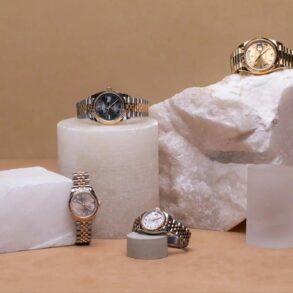
When choosing leather goods, visiting your Fort Myers leather specialist can unlock a world of quality and craftsmanship. With its unmatched durability, versatility, and elegance, leather represents more than just a material; it embodies style and functionality.
From timeless handbags and sleek wallets to luxurious furniture, the quality of leather is integral to the longevity and beauty of these items. This guide delves into the nuances of selecting premium leather goods, ensuring your choices are informed and reflect the luxury and quality inherent in these materials.
The History and Evolution of Leather Goods
Leather has been a valued material throughout history, evolving from basic utility to a symbol of luxury and style.
Early Beginnings and Utilitarian Use
Leather’s use dates back to ancient civilizations, where it was primarily used for clothing, shelter, and tools. Its durability made it an ideal material for these early applications.
Introduction of Leather in Furniture and Fashion
As craftsmanship techniques advanced, leather found its way into more refined uses. In the Renaissance, it became a staple in fashion accessories and furniture. Leather chairs and other furnishings became symbols of status and elegance in European aristocracy.
Modern Leather Goods and Mass Production
The Industrial Revolution brought mass production of leather goods, making them more accessible. Today, leather is a cornerstone in the fashion industry, with a range of products from luxury handbags to designer shoes.
Understanding Leather Types and Grades
Leather is not just a singular entity but a spectrum of quality and characteristics. Understanding the different types and grades is crucial for making an informed purchase.
Full-Grain Leather
Regarded as the pinnacle of leather quality, full-grain leather is the most authentic form, showcasing the hide’s natural surface, marks, and all.
Its durability is unmatched, and it ages more gracefully than any other type, developing a rich patina that tells a story over time.
Top-Grain Leather
Slightly below full-grain in the hierarchy, top-grain leather undergoes a process to remove imperfections.
This results in a more uniform finish but with less of the rugged durability of full-grain. It’s a popular choice for designer goods where aesthetics are paramount.
Genuine Leather
Often misconstrued as top quality, genuine leather is actually a lower grade. It’s more affordable but lacks higher-grade leather’s durability and rich, aging properties.
The knowledge of these grades empowers you to balance your budget with the quality and longevity you seek in leather goods.
Assessing Leather Quality and Craftsmanship
The tactile and visual aspects of leather play a significant role in its appeal. When assessing leather quality, consider the following:
Texture and Feel
High-quality leather should feel smooth and supple and have a natural texture. It shouldn’t resemble plastic or feel overly rigid. This natural elasticity and softness are indicative of well-processed leather.
Stitching and Construction
Pay attention to the craftsmanship. Uniform stitching, with no loose threads, is a sign of quality. Also, look for well-finished edges – the little details can tell you a lot about the care put into the product.
Smell
Genuine leather has a distinctive, rich smell. If it smells overly chemical, it might be an indicator of poor processing or low-quality material.
Considerations for Leather Care and Maintenance
Quality leather is an investment that requires care. Proper maintenance extends its life and enhances its appearance over time.
Protection
Regularly applying leather conditioners can keep your leather goods supple and prevent cracks. Waterproofing treatments are essential for items regularly exposed to the elements, like leather jackets or shoes.
Longevity
Be mindful of how different leather reacts to water, sunlight, and wear and tear. Some leathers develop a patina with exposure, while others may deteriorate if not properly cared for.
Identifying Ethical and Sustainable Leather Sources
Choosing leather goods can be done conscientiously in an era where sustainability is key.
Eco-Friendly Tanning Processes
Traditional tanning methods, while effective, can have a significant environmental impact. Seek out brands that use vegetable tanning or other eco-friendly methods that are less environmentally harmful.
Ethical Sourcing
The ethics behind leather sourcing are crucial. Opt for brands that are transparent about their sourcing, ensuring that the leather is not only high quality but also ethically obtained.
Style and Personal Preference
Your personal style should guide your leather choices. Whether you lean towards timeless classics or contemporary trends, leather offers a range of options to match your taste.
Timeless vs. Trendy
Decide if you want a piece that will stand the test of time in both style and durability or if you’re looking for something that captures the essence of current fashion trends.
Color and Finish
Leather isn’t limited to the traditional browns and blacks. Modern dyeing techniques have introduced a wide spectrum of colors. Choose a color and finish that aligns with your style and the purpose of the item.
Leather Goods in the Digital Age
Digital technology and online shopping have revolutionized the way we purchase leather goods, offering convenience and a wider selection.
Online Shopping Pros and Cons
The digital marketplace allows for easy comparison of products and prices. However, it can be challenging to assess the quality of leather goods online. Detailed product descriptions and customer reviews are crucial in making an informed decision.
Customization and Personalization
Many online platforms and luxury leather goods providers now offer customization services. This allows buyers to select specific leather types, colors, and even monogramming, creating a piece that is uniquely theirs.
Virtual Consultations
Many leather specialists, including those in Fort Myers, offer virtual consultations. This service helps bridge the gap in online shopping, providing expert advice and answering queries in real time.
Incorporating these modern shopping methods into your purchasing process can enhance the experience of acquiring quality leather goods, making them more personalized and accessible.
Invest Wisely in Leather Goods
Selecting quality leather goods is an investment in style, durability, and artisanship. By understanding the various types and grades of leather, recognizing quality craftsmanship, considering care and maintenance, and making ethical and style-based choices, you can select pieces that elevate your style and promise longevity and sustainability.
Quality leather goods age with grace, evolving to become functional items and cherished possessions that reflect personal journeys and individual lifestyles.
Here are some other articles related to your search:
This post was originally published on this site be sure to check out more of their content.



